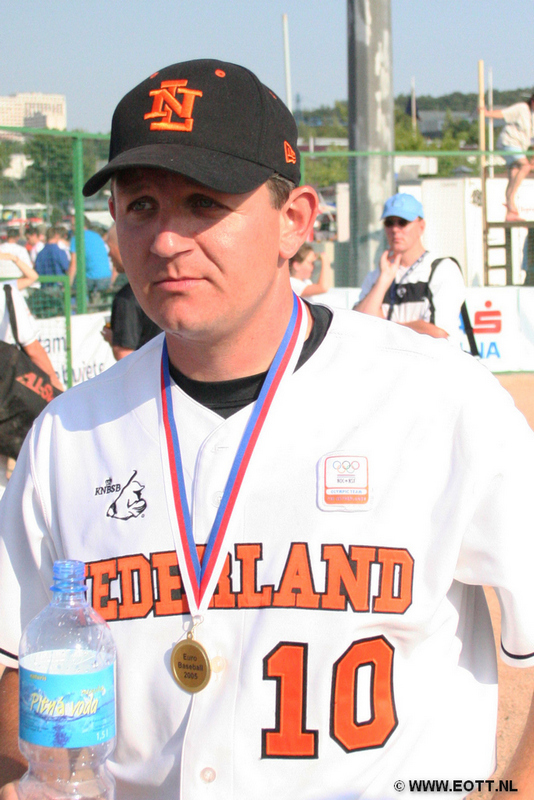I want to thank you for your efforts on my behalf so I could participate as an EBCA Exchange Coach. I had a superb experience in the Netherlands; the visit allowed me to accomplish everything that I desired. Here are notes on various aspects of my visit that should make up for my lack of blogging.
Here are the various teams whose practices I was able to observe during my 19-23 January visit to the Netherlands:
· Club Kinheim (pitchers and catchers ages 8-10 and 10-12) in Haarlem
· Kennemerland (Region Haarlem) Future Stars (ages 10-up who want to be Haarlem Academy players)
· Baseball Academy APPM Rabbits (region Haarlem) (13-15 and 15-18)
· Baseball Academy Scimitars Midden-Nederland (region Utrecht/Almere) (13-15 and 15-18)
· Neptunus Juniors (16-18)
· Neptunus Tridents (16-21)
· NL National AAA-team (16-18)
· NL National Team
It was a great slice of NL baseball.
What I observed during practices that made an impression was that at all levels:
· Players work consistently on basic ball handling drills, throwing drills (throwing to a base, even if not 90 feet away), and hitting the ball hard.
 |
| Scott Weberg - Blue Jays |
· All NL teams were using movement exercises to enhance players’ speed, agility and reaction time. I had the great opportunity to travel to various venues with Toronto Blue Jays minor league Strength and Conditioning (S&C) Coordinator Scott Weberg. His most significant influence on my thinking was observing the amount of effort he dedicates to developing athletic movements. His drills involve sprinting, lateral movement, backpedaling, and sharply changing direction.
· S&C and movement workouts are an integral part of every practice. Teams don’t execute a traditional baseball practice, then hit the weight room. While weight training is part of many teams’ workouts, S&C using plyometric training is built into practice schedules, and players focus on building baseball-specific strength and stamina.
· Practices were organized such that position drills blended easily with team drills.
· The amount of data collected on players, even the youngest players, to track their development is astounding. At Bussum, I had the pleasure of spending quality time with John Debbaut, Director Baseball Academy Scimitars Midden-Nederland, who provided me with an overview of the types of data the club tracked and how it was utilized.
· Pitchers worked as hard as real baseball players. That was something new. Hey, just kidding. The truth is that the amount of work pitchers, from the level of the National Team on down, put into bands, med balls, and specific leg, core and shoulder exercises to increase strength and ensure stability was eye opening.
I was extremely impressed by the organizational structure, a coherent training philosophy being well-executed (most evident throughout the Neptunus organization, as I got to see players on clubs from ages 10 through Seniors), and superb coaches at all levels. The organization, approach to player development, committed coaches and dedication of KNBSB resources are reflected in the overall skill set of all players, but was particularly evident to me in the 14-18 year age group. Players are athletic, catchers are fundamentally sound because they work receiving/blocking/transfer drills every practice, pitchers are strong (NL National Junior and Senior team Pitching Coach Steve Janssen said Junior pitchers are now topping their max velocity shown at the end of last season), infielders are quick and agile, and hitters, who take an incredible amount of swings at various stations during practice, hit the ball hard.
 |
| Dutch National Team Pitching Coach Steve Janssen |
While the organizational structure and system for player development is well-established, there are also unique approaches that make NL baseball one of the top programs in Europe. KNBSB institutionally believes in motor learning. Coaches put players into positions that challenge their abilities to execute basic baseball fundamentals. They don’t necessarily look to correct flaws, but let players develop their own mental-physical data bases to learn to hit, hit with power, run, field and throw. They don’t tell hitters to “bring your hands up a bit;” instead, coaches will implement some drill to correct a perceived flaw. In addition, throughout NL baseball, there are a lot of forward thinkers who are not afraid to challenge current beliefs and try new things they believe may assist player development. For example, NL is currently pushing the envelope on vision enhancement. I saw a team of university researchers using an electro-optical system where Rabbits’ hitters were wearing special optics glasses, and what the player was seeing while tracking a pitched ball showed up on a computer screen. Hitters wearing the glasses were getting at bats against various pitchers, and the system was recording how hitters were performing. This new effort is extremely costly, but it shows how KNBSB is pushing the envelope in player development by trying something new.
It was a marvelous week of total immersion Netherlands baseball. I want to use this forum of EBCA to thank the many, many NL coaches and players who freely took the time to explain their ideas and coaching philosophy and contribute to my understanding of how the Netherlands approaches player development. I would be remiss, however, by not specifically thanking the individual who put my program together, Gijs Selderijk. To Gijs and all, my week could not have been any better.
Brian Bach

No comments:
Post a Comment